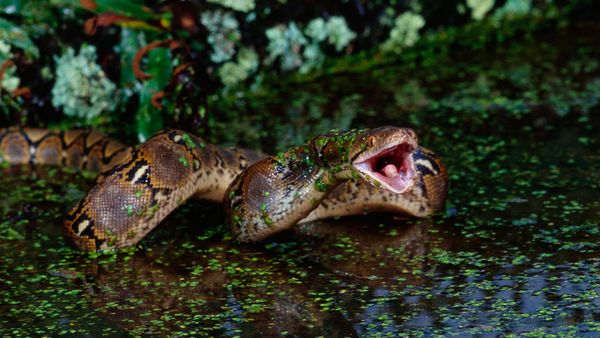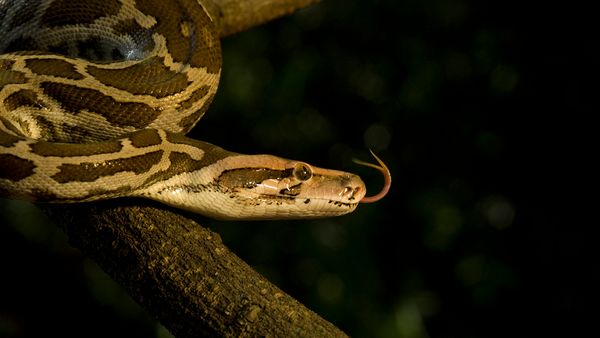Findings from a 2022 study published in the journal Ecology and Evolution suggest that the native bobcat could be a natural check against this threat because of its appetite for python eggs.
In 2021, ecologists, including Andrea Currylow from the U.S. Geological Survey, recorded a bobcat consuming the snake's eggs in the Big Cypress National Preserve, indicating a potential new predator-prey dynamic.
This event was documented by motion-sensitive cameras placed near a python's nest. Initially installed to study python reproductive behavior, the cameras captured a bobcat eating the python eggs and returning multiple times for more.
In a dramatic encounter, the bobcat and the python, weighing 115 pounds (52.1 kg), faced off, with the bobcat making aggressive moves despite the python's formidable size. The encounter left the nest significantly damaged, with many eggs destroyed and the rest failing to hatch.
“Most cat species adapt their diet to what is available, so bobcats predating on python eggs is actually not that surprising,” said Mathias Tobler, a wildlife ecologist at the San Diego Zoo Wildlife Alliance.
This incident, while potentially isolated, raises the possibility that native species like bobcats are adapting to the python's presence. This adaptability might offer a glimmer of hope in the struggle to control the invasive python population in Florida.
This article was written in conjunction with AI technology, then fact-checked and edited by a HowStuffWorks editor.



